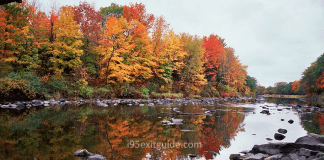Introduction: Unveiling Florida’s Coastal Treasure
Florida’s coastline is a tapestry of sun-drenched beaches, ancient history, and vibrant ecosystems. While many roads trace the Atlantic, none capture its essence quite like State Road A1A. At its heart lies a special 72-mile stretch, a journey that transcends a simple drive. This is the A1A Scenic & Historic Coastal Byway, a nationally celebrated route that winds through the cradle of American history and some of the state’s most pristine natural landscapes. It’s a road trip that promises more than just views; it offers an immersive experience into the soul of coastal Florida, where every curve reveals a new story.
A1A Scenic & Historic Coastal BywayWelcome to the A1A Scenic & Historic Coastal Byway
The A1A Scenic & Historic Coastal Byway is a designated portion of the larger State Road A1A, stretching from the southern edge of Ponte Vedra Beach in St. Johns County to the northern boundary of Flagler Beach in Flagler County. It’s not just a road; it’s a curated experience, recognized as one of the premier Florida Scenic Highways. This byway guides travelers through a landscape where 500 years of history meet unspoiled nature, from marshlands teeming with life to the endless expanse of the Atlantic Ocean.
What Makes This Byway an “All-American Road”?
This route holds a distinction that places it in the nation’s highest tier of scenic drives. The A1A Scenic and Historic Coastal Byway was designated an All-American Road in 2021, a prestigious title reserved for scenic byways with features so exceptional they are considered destinations in themselves. This designation signifies that the road possesses unique qualities—archaeological, cultural, historic, natural, recreational, and scenic—that are nationally significant and reflect the true American experience.
A Journey Through Time, Nature, and Quintessential Florida Beach Culture
Embarking on a trip along this byway is to travel through multiple dimensions of Florida. You will stand in the shadows of the oldest European-established settlement in the United States, paddle through serene estuaries that have remained unchanged for centuries, and feel the laid-back rhythm of authentic beach towns. It’s a place where history buffs, nature lovers, and beachcombers can all find their perfect adventure, making it a microcosm of everything that makes the state’s east coast so compelling.
Understanding the A1A Scenic & Historic Coastal Byway
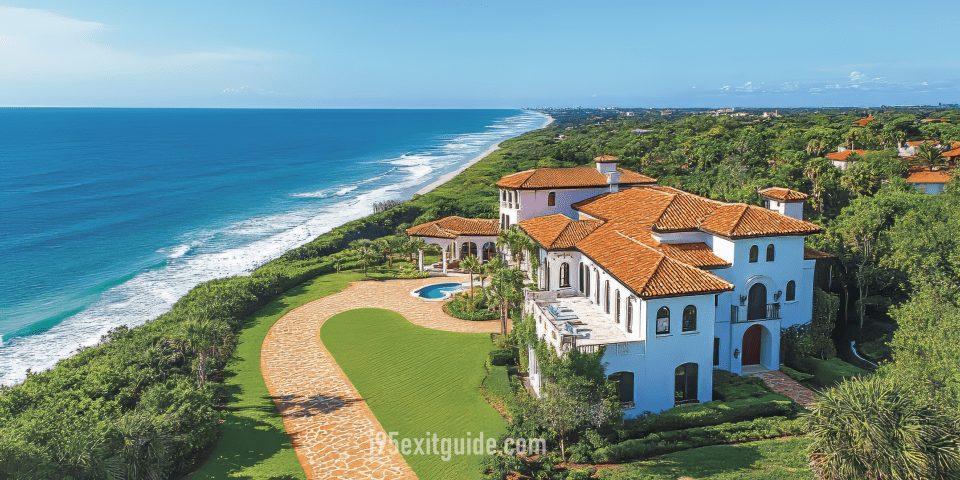
To fully appreciate the journey, it’s essential to understand the route and its significance. This isn’t just about getting from point A to point B; it’s about savoring the spaces in between.
The Route: From Ponte Vedra Beach to Flagler Beach
The officially designated 72-mile A1A Scenic & Historic Coastal Byway begins just south of Jacksonville in the upscale community of Ponte Vedra Beach. From there, it threads south through St. Augustine, the nation’s oldest city, continues across Anastasia Island, and hugs the coastline through quiet beach communities before concluding at the iconic pier in Flagler Beach. The entire drive can be completed in a few hours, but to truly experience its treasures, you should plan for at least a full day, if not a weekend.
A National Scenic Byway and All-American Road: What It Means
Before earning the “All-American Road” status, the route was first recognized as a National Scenic Byway. This initial designation identifies roads with outstanding scenic, historic, or cultural qualities. The upgrade to an All-American Road means the A1A Byway possesses features that are so unique and compelling that they are must-see attractions for both domestic and international travelers. It’s a testament to the profound historical narrative and breathtaking natural beauty concentrated along this specific stretch of coastline.
Why Drive A1A? History, Scenery, and Unique Experiences
Driving this byway is an active exploration. The route offers direct access to national monuments, pristine state parks, and miles of protected coastline. It’s a chance to witness the convergence of the Intracoastal Waterway and the Atlantic Ocean, creating rich estuarine environments perfect for wildlife viewing. You can step out of your car and onto historic cobblestone streets, hike lush nature trails, or simply watch the sunrise over an empty beach. This density of diverse, high-quality experiences is what sets the A1A Scenic & Historic Coastal Byway apart from other coastal drives.
Getting There: Access Points and Connecting Highways (e.g., from I-95)
The byway is easily accessible. From the north or south, Interstate 95 (I-95) is the primary artery. To reach the northern terminus near Ponte Vedra Beach, travelers can take exit 329 (SR 210) east to A1A. For St. Augustine, exits 318 (SR 16) or 311 (SR 207) are common access points. To start from the southern end at Flagler Beach, exit 284 (SR 100) from I-95 will lead you directly to the coast and the start of your northbound journey.
Echoes of the Past: Historic Stops Along the A1A Byway
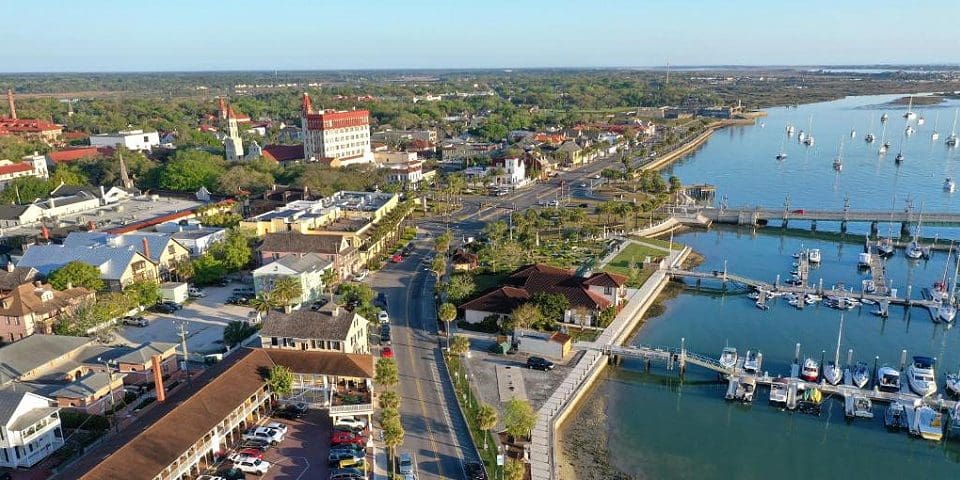
This region is steeped in a history that predates the founding of the United States. The byway serves as a corridor through some of the nation’s most significant historical landmarks.
St. Augustine: The Nation’s Oldest Continuously Inhabited European-Established Settlement
The undeniable historic heart of the byway is St. Augustine. Founded in 1565, its Spanish colonial architecture, narrow streets, and imposing fortresses transport visitors back in time. As you drive A1A across the iconic Bridge of Lions onto Anastasia Island, the cityscape offers a stunning view. Key attractions like the Castillo de San Marcos, the Lightner Museum, and the Colonial Quarter are just a short walk or drive from the byway itself, making it an essential multi-hour stop.
Fort Matanzas National Monument: A Fortress of History
Just 14 miles south of St. Augustine, a crucial piece of colonial history awaits. The Fort Matanzas National Monument protects a 1742 Spanish watchtower built to guard the southern approach to St. Augustine. A short, free passenger ferry takes you across the Matanzas River to the fort itself, where park rangers share stories of colonial conflict and strategy. The surrounding salt marsh and barrier island ecosystem also offer beautiful nature trails for exploration.
Historical Markers and Lesser-Known Stories
Beyond the major landmarks, the byway is dotted with historical markers that tell the smaller, more intimate stories of the area. These plaques commemorate everything from Civil Rights-era events to the sites of old plantations and Native American settlements. Keep an eye out for them in places like Vilano Beach and along the Old A1A Beachfront Historic District, as they provide a deeper context to the land you are traversing.
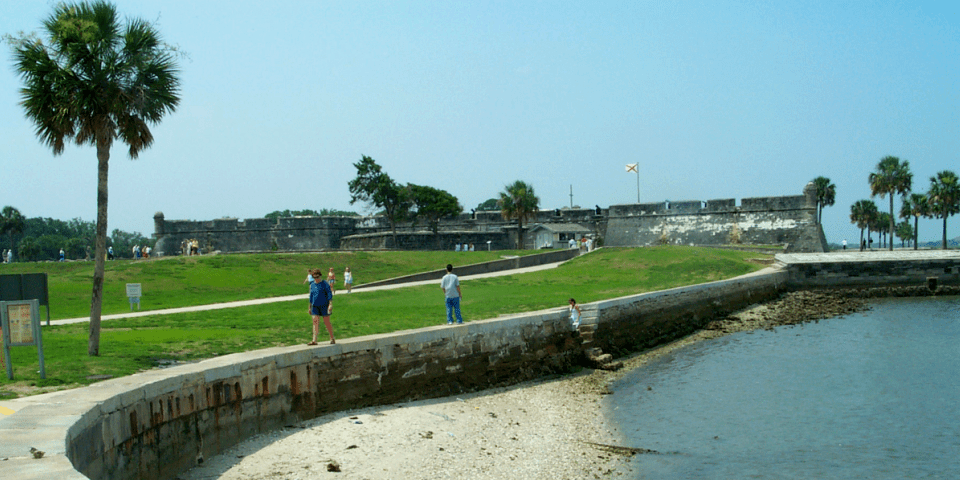
Nature’s Masterpieces: Exploring Coastal Ecosystems & Natural Wonders
The A1A Byway is a gateway to some of Florida’s most vital and beautiful coastal habitats. The road itself acts as a thin line between the powerful Atlantic and the tranquil waters of the inland estuaries.
Guana Tolomato Matanzas National Estuarine Research Reserve (GTMNERR)
Stretching for miles along the byway north of St. Augustine, the GTMNERR is a protected landscape of salt marshes, mangrove tidal wetlands, and oyster beds. This dynamic environment is a critical nursery for countless marine species. The reserve’s Environmental Education Center provides fantastic exhibits, and its extensive network of nature trails offers opportunities for hiking, bird watching, and photography. Visitors can also launch kayaks or paddleboards to explore the serene backwaters of the Intracoastal Waterway.
Gamble Rogers Memorial State Park: Coastal Beauty and Recreation
Located at the southern end of the byway in Flagler Beach, Gamble Rogers Memorial State Recreation Area is named for the legendary Florida folk singer. This beautiful state park offers a perfect blend of experiences. On the east side of A1A, you’ll find a stunning beachfront ideal for swimming, sunbathing, and fishing. On the west side, the park borders the Intracoastal Waterway, providing a boat ramp, kayak rentals, and campsites nestled among the coastal scrub.
Other State Parks and Preserves Along the Route
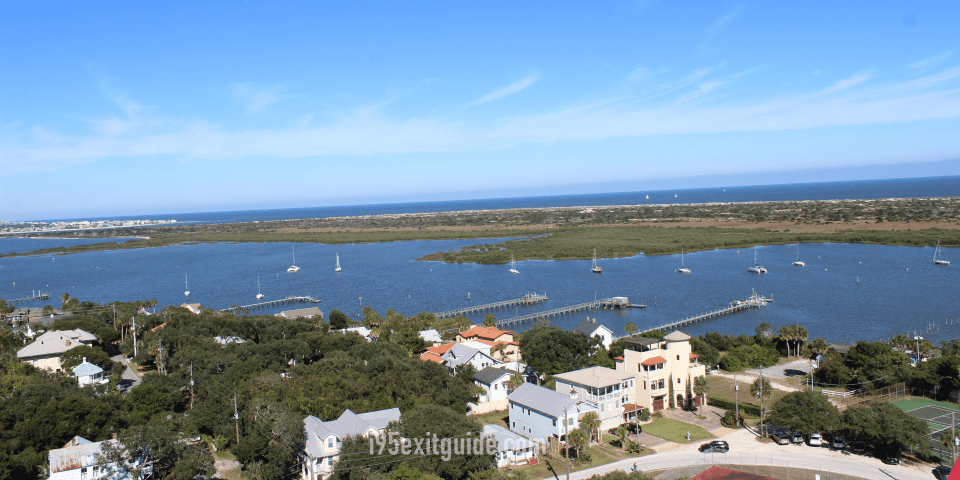
Anastasia State Park, located on Anastasia Island, is another must-visit natural gem. It boasts over 1,600 acres of rich ecosystems, including pristine beach, tidal marsh, and ancient sand dunes. The park is a haven for bird watchers and offers camping, hiking, and water sports at Salt Run, an estuarine tidal marsh. Further north, smaller preserves and beach access points like Mickler’s Landing in Ponte Vedra Beach provide public access to the stunning shoreline.
Turtle Mound Road (if within driving range or a known detour for natural beauty)
While Turtle Mound National Historic Site is further south of the byway’s official end, its spirit of preservation is mirrored along the A1A route. The byway itself features sections where the road narrows, flanked by dense canopies of live oaks and sea grapes, offering a glimpse into what Old Florida’s coastal roads once looked like. These stretches, particularly between Marineland and Palm Coast, provide a scenic, tunnel-like driving experience.
Florida’s Soul: Beach Town Charm and Coastal Culture
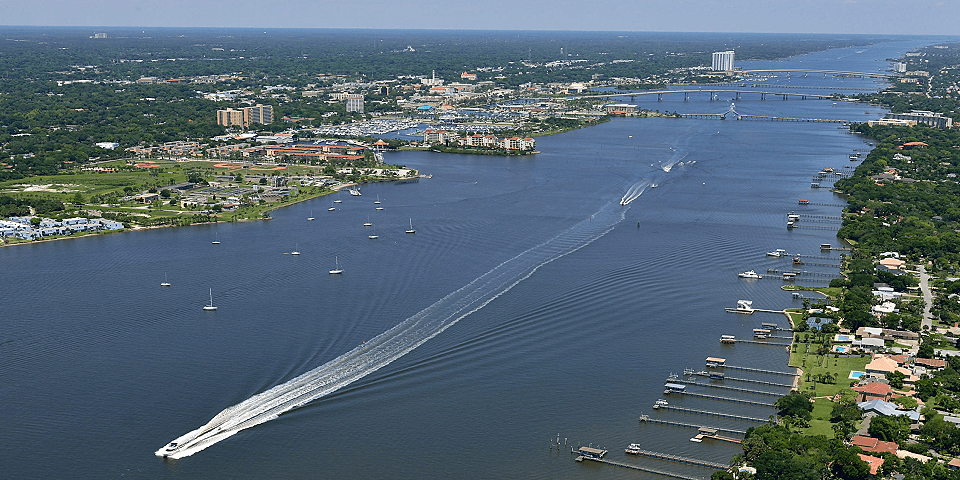
The A1A Byway connects a series of unique beach towns, each with its own distinct personality and charm. This is where you can experience authentic Florida beach culture.
Northern Jewels: Jacksonville Beach to Ponte Vedra Beach
While the official scenic byway begins at the southern edge of Ponte Vedra Beach, the drive down from Jacksonville Beach sets the stage. Ponte Vedra Beach is known for its luxurious resorts, championship golf courses, and pristine, wide beaches. A key public access point, Mickler’s Landing, is a popular spot for locals to hunt for shark teeth washed ashore.
St. Johns County’s Coastal Delights: Vilano Beach to Crescent Beach
Just north of St. Augustine, Vilano Beach offers a retro, Art Deco vibe and stunning views of the city’s skyline. South of the historic district, you’ll find St. Augustine Beach and Crescent Beach on Anastasia Island. These communities are more residential and laid-back, with miles of white sand beaches, casual seafood restaurants, and a family-friendly atmosphere.
Flagler County’s Laid-Back Appeal: Flagler Beach
The southern terminus of the byway, Flagler Beach, is the epitome of a classic, old-school Florida beach town. Its iconic wooden pier is a hub for fishing and sightseeing. The town is proudly free of high-rise condos, preserving its open, scenic vistas. Local cafes, surf shops, and quirky boutiques line the road, inviting travelers to park the car and explore on foot. In this part of Flagler County, parks like Bird Island Park offer quiet walking paths and wildlife viewing opportunities.
Ormond Beach and Daytona Beach: Speed and Serenity
Though just south of the byway’s official designation, the spirit of A1A continues through Ormond Beach and Daytona Beach. This stretch of State Road A1A is famous as “The Birthplace of Speed,” where early automobile races were held on the hard-packed sand. Today, it offers a more bustling version of coastal life while still providing access to beautiful parks and beaches.
Embracing “Florida Beach Culture”
Driving the A1A Byway is an immersion in this culture. It’s about salty air, the sound of crashing waves, and a pace of life dictated by the tides. It means enjoying fresh seafood at a waterfront shack, watching pelicans glide over the water, and appreciating the simple pleasure of a coastal sunset.
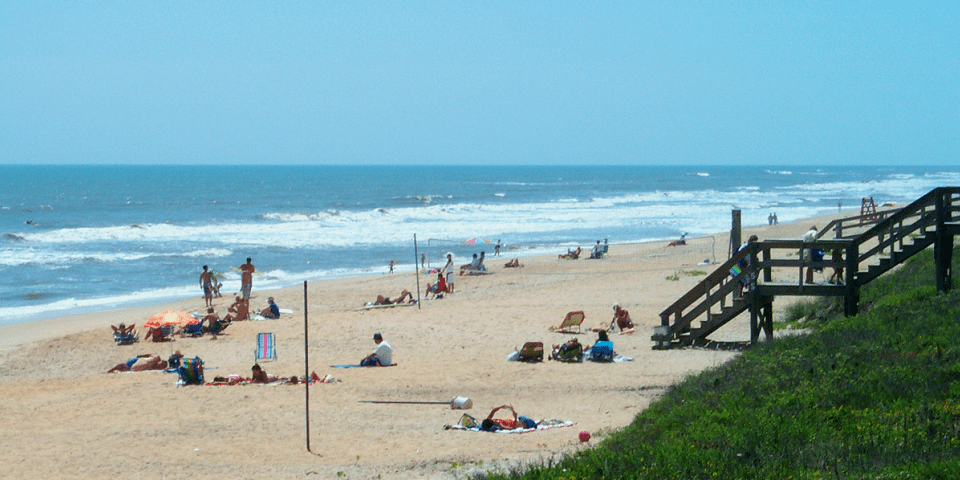
Planning Your Ultimate A1A Road Trip
A little planning will help you make the most of your journey along one of America’s most celebrated scenic byways. The state’s tourism industry is robust, with Florida welcoming 140.6 million visitors in 2023, so booking ahead is always wise.
Suggested Thematic Itineraries
- The History Buff’s Day Trip: Start at Fort Matanzas National Monument, then spend the afternoon exploring St. Augustine’s historic downtown and the Castillo de San Marcos.
- The Nature Lover’s Weekend: Camp at Anastasia State Park. Spend one day kayaking in the GTMNERR and the next day hiking the trails at Gamble Rogers Memorial State Park.
- The Beach Town Sampler: Begin with sunrise at Mickler’s Landing, have lunch in St. Augustine Beach, and end the day fishing from the pier in Flagler Beach.
Best Time to Visit and Driving Tips
Spring (March-May) and Fall (September-November) offer the best combination of pleasant weather and smaller crowds. The summer is popular but can be hot and humid with afternoon thunderstorms. Drive with your windows down, adhere to the varying speed limits, and be mindful of cyclists and pedestrians who share this popular route. Use designated pull-offs to stop for photos and soak in the views.
Where to Stay and Dine: Local Recommendations
Accommodation options range from historic inns in St. Augustine to beachfront hotels in Ponte Vedra and charming motels in Flagler Beach. For dining, don’t miss the chance to eat at local seafood spots. Some favorites include Cap’s on the Water for sunset views near St. Augustine and The Golden Lion Cafe, a classic beachside grill in Flagler Beach.
Conclusion
Florida’s A1A Scenic & Historic Coastal Byway is more than just a road; it is a living museum, a nature sanctuary, and a cultural touchstone all rolled into one 72-mile stretch. It encapsulates the story of Florida, from its ancient origins and colonial past to its modern-day identity as a haven for sun-seekers and nature enthusiasts. By earning the coveted title of an All-American Road, the byway has been nationally recognized as a quintessential American journey. Whether you have a day or a week, a drive along this remarkable route offers a profound connection to the history, beauty, and enduring spirit of coastal Florida. It’s a trip that stays with you long after you’ve brushed the last grain of sand from your shoes.
The I-95 Exit Guide is the Internet’s largest and most complete website dedicated to Interstate 95 travelers. Find detailed exit service listings… lodging, camping, food, gas and more for every exit from Maine to Florida!
On the road? Why not take us with you. The I-95 Exit Guide is mobile-friendly and totally FREE. No App Required.
Traveling another route? Visit our growing family of exit guides: I-4 Exit Guide, I-5 Exit Guide, I-10 Exit Guide, I-75 Exit Guide, I-80 Exit Guide and I-95 Exit Guide. Detailed exit service listings… discount lodging, camping, food, gas and more for every exit along the way!


